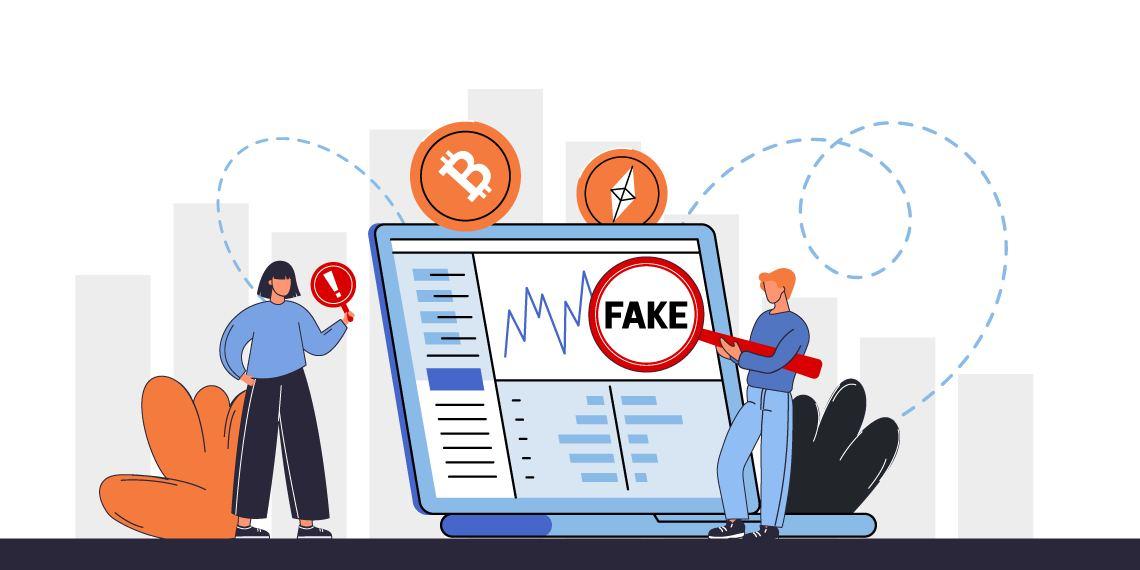Cryptocurrencies are all the rage right now, but many people don’t know that initial coin offerings (ICOs) have been around for quite some time. With new cryptocurrencies launching each month also comes an endless supply of newly created coins that can be bought or traded on various exchanges just like any other currency would.
Since cryptocurrencies are a hot commodity, it unfortunately also makes them a prime target for scams and fake projects, andit can be challenging to tell which ones are legitimate or not. What are some tell-tale signs that a crypto project is fake and how can you spot exchange websites that are scams?
Some indicators that a crypto project is fake
- There is no information about the team or their experience on their website. Team members should have social media profiles that are verifiable.
- The website has multiple grammatical errors and/or typos.
- They promise guaranteed returns or profits.
- They have a short track record or contact information is vague.
- The code for the project is not available to view publicly.
How to spot a fake crypto exchange website
One of the most important best practices for cryptocurrency holders is to use reputable exchanges. Legitimate platforms have an active social media presence, website, and employees that can be verified. Before creating an account on an exchange site, learn these 3 ways to spot a fake website to protect yourself.
False or Misspelled Domains
Businesses sometimes pay thousands of dollars to acquire a particular domain and they do not make spelling mistakes during this transaction. When scammers need to make a clone website look authentic, they use its URL with one or two spelling changes. The header does not need to be changed as it is not a part of the website’s identity and can be the same for both the real and the fake websites.
Try to:
● Read the clear URL before clicking on it.
● Do not click on any URL regardless of whether it’s an ad unless fully verified.
● Avoid clicking on shortened URLs sent to you.
● Compare the top search results spellings and domains before clicking on one.
● Use a firewall to protect you from malicious websites.
HTTP vs HTTPS
The use of safety protocols on a website minimizes the threats for the user from the start. HTTPS links are secured, whereas HTTP links are not. The padlock symbolizes that the website is secured. By clicking on it, the browser may notify you about security. All legitimate businesses have HTTPS, and any website that doesn’t is potentially unsafe and should be avoided.
Unmatched Content and Web Pages
Take some time to read the homepage, about us section, and the other tabs. Clone websites are rarely as precise as the original and have many mistakes, including typing, unmatched text, unordered descriptions, etc. While this may not be effective for all scams, it can help to identify potential fake sites..
Be very thorough and double-check these sites before making any decision, and try to gather intel and research the project before investing any amount.
Protect Your Personal Details
While many scams have information forms exactly like the actual website, some might have altered formats, different details, and required sections. Always be 100% certain that a website is legitimate before entering any important information about yourself or your assets.
Encryption And Protection
The great thing about encryption programs and systems with multiple layers of security is that they are based on a “multi-factor ‘moving target’ approach that is as dynamic as the scammers efforts to bypass this security.” Digital assets are as legitimate as physical ones, and the gains and value are real too so it is essential to have the correct protocols to protect your information, currencies, tokens, and assets.
How does REV3AL technology contribute to solving this problem?
REV3AL technology provides an API integration solution to NFT marketplaces using it. The integration tool ensures the originality and authenticity when creating new digital assets.
REV3AL offers an innovative solution through multiple levels of authentication both on and off the blockchain, as well as self-verification effects to help protect digital assets from being altered, misused, or reused.
These features create multiple layers of security to prevent scammers or counterfeiters from accessing your digital assets, NFTs, and personal information. REV3AL makes sure that your assets are in your control.





